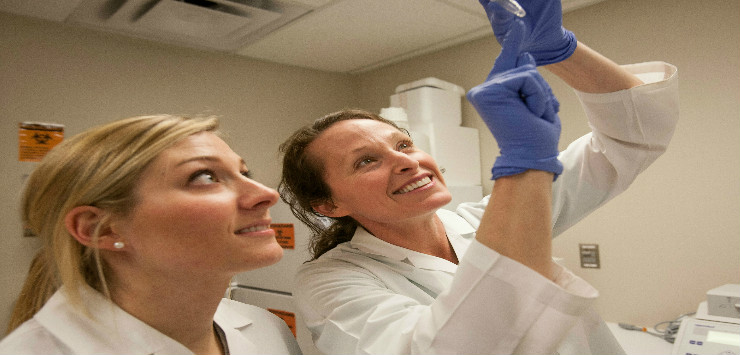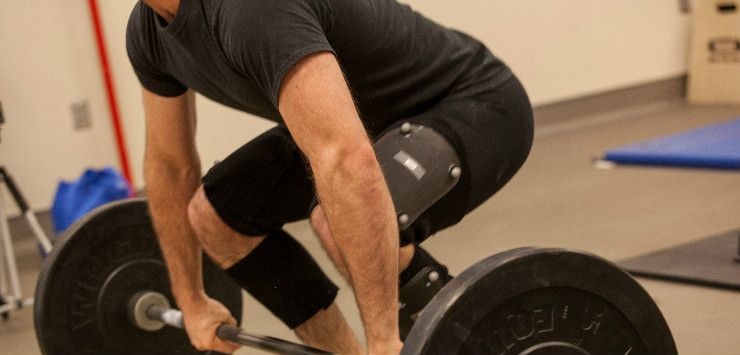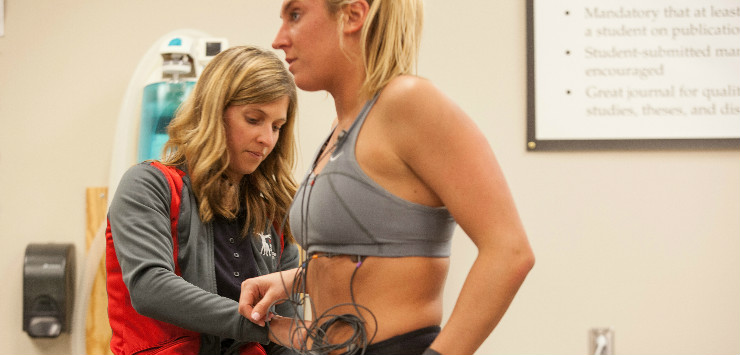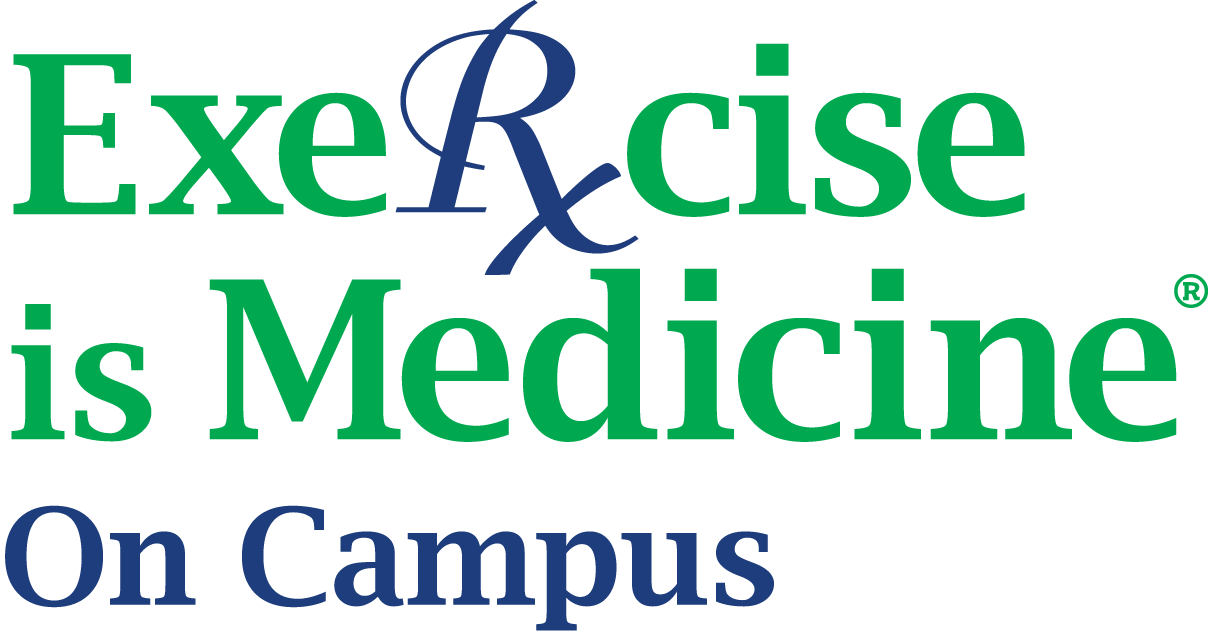Research
Current Faculty Research
-
Obesity as it relates to the following:
-
Metabolic dysfunction
-
Cellular inflammation
-
Diabetes
-
Balance
-
Effects of Exercise during Pregnancy in Obese Women
-
Health Education, Exercise, and and Cognition in Older Populations (Bingocize)
-
Investigation of an Improved Anthropometric Assessment of Cardiovascular Disease Risk
-
Lower Extremity Biomechanics in the following populations:
-
Athletes
-
Firefighters
-
Rural adults
-
Individuals with Special Needs
Highlighted Research
Health Education, Exercise Interventions, and Worksite Health Promotion
Funded internally by Western Kentucky University and externally by the Kentucky Science and Engineering Foundation and the Retirement Research Foundation, Dr. Crandall is currently investigating the efficacy of a self-created health promotion program combining exercise, health education, and the game of bingo (Bingocize). Together with WKU Cognitive Psychologist, Dr. Matthew Shake, a multi-site clinical trial will begin in the spring of 2016 to determine the effects on functional performance, health knowledge, and cognition in a group of older adults. Additional investigations are planned for college students and veterans at the U.S. Veterans Administration. Dr. Crandall is also interested in worksite health promotion. In partnership with WKU Human Resources and other Kinesiology, Recreation, and Sport faculty, a large investigation of the effectiveness of sit/stand workstations is planned for the fall of 2016 on the WKU campus.
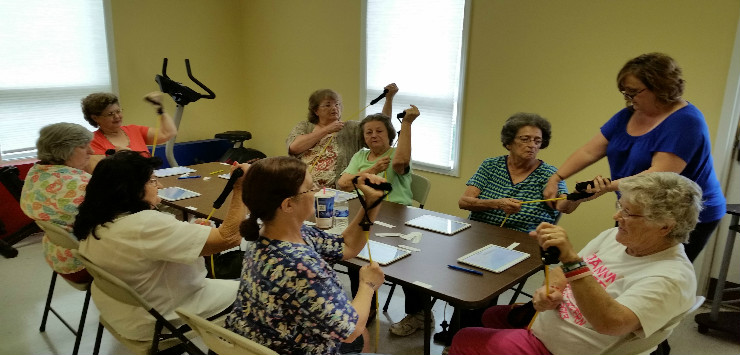
Physical Activity during Pregnancy: Impacts on Maternal and Neonatal Health
The goal of Dr. Rachel Tinius’ research is focused on improving the health of pregnant women and their babies, both
nationally and in South Central Kentucky. Physical activity during pregnancy improves
many maternal and infant health outcomes; however, most pregnant women still do not
comply with physical activity recommendations. One of Dr. Tinius’ externally funded
KBRIN-INBRE research projects will help identify several potential pathways (i.e. metabolic and
inflammatory pathways) that can be targeted with future exercise interventions, as
well as implement a sustainable intervention designed to increase physical activity
levels through education and community resources.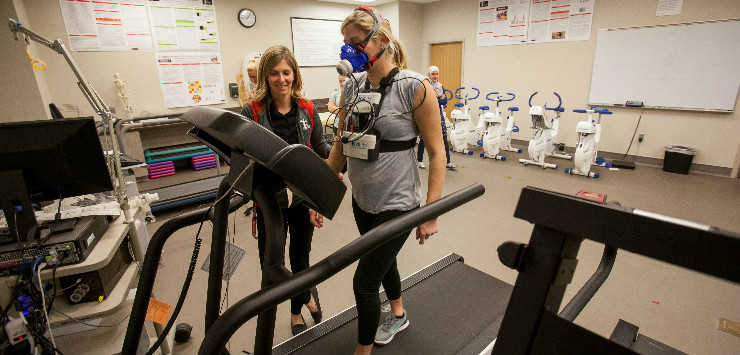
Metabolic Inflexibility with Obesity and Epigenetics
Severely obese individuals are metabolically inflexible in terms of adjusting metabolism
in response to their dietary intake, which may lead to weight gain and other metabolic
problems like insulin resistance. This is important because the prevalence of severe
obesity in the United States, particularly among younger women, is increasing rapidly.
Internal funding at Western Kentucky University through the College of Health and
Human Services and the Office of Research, as well as external funding through the Kentucky Biomedical Research Infrastructure Network and INBRE, has allowed Dr. Jill Maples to train students and investigate this area of research, which deals with one of
the most significant health issues of our time, metabolic disease and obesity. The
purpose of this research is to develop a greater understanding of overall metabolic
health and the epigenetic mechanisms that likely play a role in metabolic health.
The long-term goals of Dr. Maples’ research are to help identify therapeutic targets
to treat the complex metabolic diseases like obesity and improve the metabolic health
of individuals in her community and beyond. 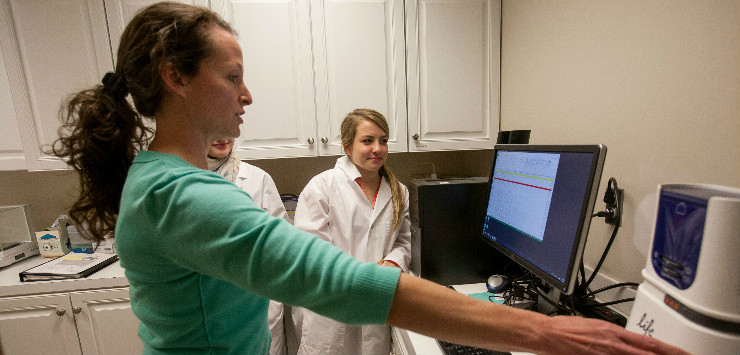
Evaluation of sit-stand desktop workstations in the workplace.
Western Kentucky University’s Exercise Science and Kinesiology Programs are currently conducting an investigation to evaluate the impact of using sit-stand desktop workstations throughout the workday for 10 weeks.
Recruitment and scheduling for pretesting for study begins August 12th, 2016. Pretesting will be completed by September 9th and participants will begin using the sit-stand workstations on September 12th for 10 weeks. Post testing will be conducted at the end of November and early December. Please read information below for study criteria, study procedures, and videos with more details regarding the sit-stand desktop work stations.
Please contact Dr. Mark Schafer at sitstand@wku.edu for inquires or to schedule an appointment for pretesting.
Study criteria include:
- Current full-time WKU staff that are primarily responsible for performing work sitting at a desk and sitting approximately 6 or more hours a day.
- Male or female 20 to 60 years old.
- Be healthy and have no limitations when transitioning from sitting to standing or standing throughout the day.
- Participants can be sedentary to recreationally active (Low to moderate intensity exercise/activity approximately 3 days per week).
- Meet all of the study requirements during pretesting.
Explanation of Procedures: Prior to using the sit-stand workstation, you will report to the Exercise Physiology lab in Smith Stadium East where you will complete a medical history and a physical activity readiness questionnaire. You will undergo baseline testing consisting of: heart rate, blood pressure, height, weight, body mass index (BMI), a sit-and-reach flexibility test, a 1 mile walk test, and complete the Occupational Sitting and Physical Activity Questionnaire (OSPAQ) and International Physical Activity Questionnaires (IPAQ). The 1 mile walk test will be conducted indoors in a controlled environment at the Preston center or Diddle arena. You will then be randomly assigned to one of three different groups using the stand-up work stations for 10 weeks. A sit-stand desktop workstation will be delivered to your office during a designated time according to your schedule. You will be given a short tutorial on how to use the sit-stand desktop workstation and be given final instructions for the study protocol. Anticipated set-up time and instructions will be approximately 10 to 15 minutes.
Throughout the 10 weeks, two of the groups will be sent e-mail reminders each hour reminding you of the time you are being asked to stand using the sit-stand desktop workstation according to your assigned group. At the end of the work day, you will receive one final e-mail for you to fill out an online survey to rate your anxiety, stress, productivity, exertion, pain, and be able to document the time spent standing each hour. If you are randomly assigned to the third group, you will be able to use the sit-stand desktop workstation at your discretion with no specific instructions (email reminders) when and how much to use the work station throughout the 10 weeks. You will complete an online survey at the end of work day rating anxiety, stress, productivity, exertion, pain, and will be asked to document the time spent standing each hour.
At the end of 10 weeks you will report to the Exercise Physiology lab in Smith Stadium East where you will undergo post testing consisting of: heart rate, blood pressure, height, weight, body mass index (BMI), sit-and-reach flexibility test, a 1 mile walk test, and complete the Occupational Sitting and Physical Activity Questionnaire (OSPAQ) and International Physical Activity Questionnaires (IPAQ). The 1 mile walk test will be conducted indoors in a controlled environment at the Preston center or Diddle arena.
Setting up your sit-stand desktop workstation.
For more information regarding the sit-stand desktop work stations please refer to
the links below.
View from the Hill – Standing Workstations
Ergotron – Video overview of Sit-stand desktop workstation
Ergotron - Sit-stand desktop workstation specifications
http://www.ergotron.com/ProductsDetails/tabid/65/PRDID/1017/language/en-US/Default.aspx
Some of the links on this page may require additional software to view.


